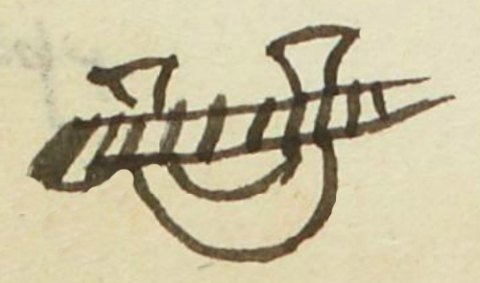Tlaco (MH576v)
This black-line drawing of the simplex glyph for the personal name Tlaco (perhaps “Middle Child," attested here as a man’s name) shows a frontal view of a device used to constrain an enslaved person (tlacotli). It involves a horizontal stick (tlacotl) with black hash marks or stripes and a half (tlaco) circle, perhaps the cuauhcozcatl, that would go around someone's neck. The visual expression seems to be a phonogram for "middle child" (tlaco).
Stephanie Wood
John Frederick Schwaller explains (The Church in Colonial Latin America, 2000, 88) how Tiacapan was often the name of the oldest child, Tlaco the name of the middle child, and Xoco the youngest. While Tlaco is more commonly known for girls, Alonso Zamora suggests "Middle Brother" for a reading of this glyph in his blog Tlacuilolli. The glyph is at least partly phonographic.
Stephanie Wood
peo. tlaco
Pedro Tlaco
Stephanie Wood
1560
Jeff Haskett-Wood
families, familias, hijos, children, orden de nacimiento, esclavos, personas esclavizadas, tecnología, aparatos, nombres de hombres

tlaco(tli), enslaved person, https://nahuatl.wired-humanities.org/content/tlacotli
tlaco(tl), stick, https://nahuatl.wired-humanities.org/content/tlacotl
tlaco, half, middle, https://nahuatl.wired-humanities.org/content/tlaco
El Segundo Hijo, o El Esclavo, o El Palo
Stephanie Wood
Matrícula de Huexotzinco, folio 576v, https://www.loc.gov/resource/gdcwdl.wdl_15282/?sp=232&st=image
This manuscript is hosted by the Library of Congress and the World Digital Library; used here with the Creative Commons, “Attribution-NonCommercial-ShareAlike 3.0 License” (CC-BY-NC-SAq 3.0).





